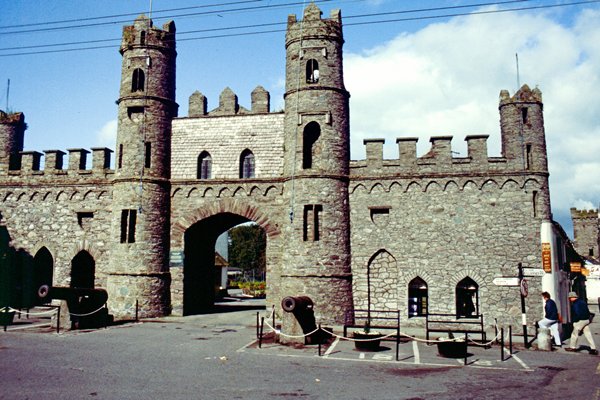
[3-8-1985]
Foto: Macroom Castle.
Uit de reisbeschrijving van Frames National:
Today we travel eastwards through the counties of Cork, Waterford & Kilkenny.
From Kenmare the road leads through Kilgarvin and Cloonkeeen to Ballynakeera, a tiny village set amongst forests and mountains in the Irish speaking world of the Gaeltacht, and Macroom a sleepy town on the river Sullane with fine Georgian houses and early 19th century Market House. There are remains of the 15th century Castle, traditionally the birthplace of William Penn.
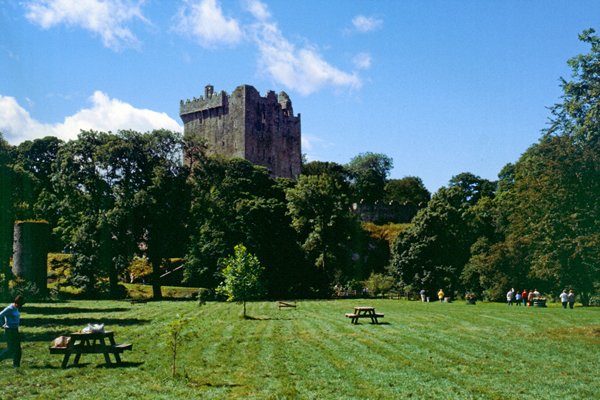
[3-8-1985]
Foto: Blarney Castle.
Uit de reisbeschrijving van Frames National:
A few miles on we reach Blarney, on the banks of the river Shournagh, world famous for the ‘Blarney Stone’ lying at the foot of the battlements of Blarney Castle. Kissing the Blarney Stone, not as easy as it sounds, is supposed io give ‘the gift of the gab'. The castle, with its huge keep, was built in 1446, the surrounding countryside abounds in prehistoric remains.
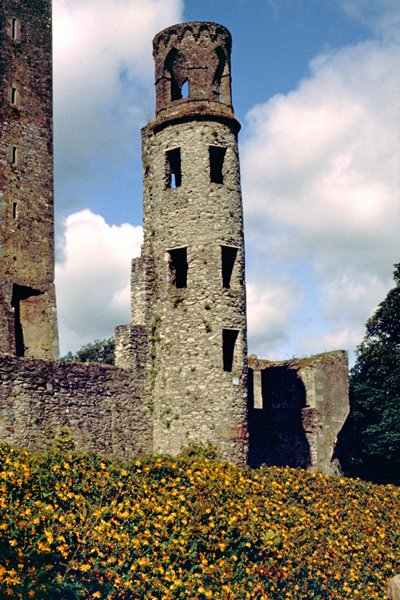
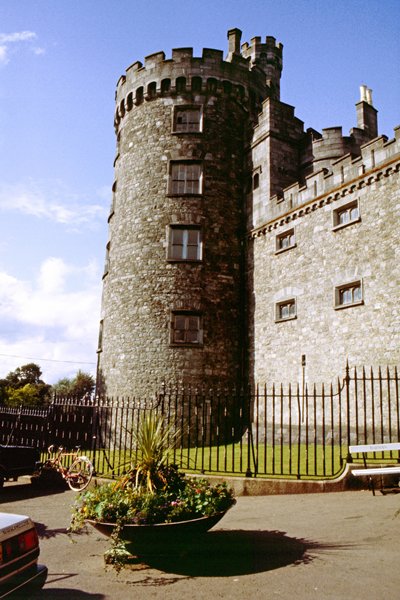
[3-8-1985]
Foto: Kilkenny Castle.
Uit de reisbeschrijving van Frames National:
From Blarney a short journey brings us into Cork, second largest city of the Irish Republic. An important sea port, commercial and manufacturing centre, and cathedral city with both Catholic and Protestant bishops. lt is the second largest city in the Republic. A carpet of streets, buildings and bridges laid out around two winding channels of the River Lee, Cork spread slowly at first across the valley floor and then, in leaps and bounds, up and over the surrounding hills.
A busy shopping centre, its principal streets lined with friendly stores, the city is also in the heart of breathtaking pastoral land. The coastline sports golden beaches and holiday resorts within a stone’s throw of the city centre.
Originally the site of a monastery founded by St Finbarr in the 6th C — 7th C on the south bank of the River Lee. Frequently raided by the Vikings throughout the 9th C who, eventually tiring of such activities, switched to trade and established a settlement at the marshy mouth of the river valley in AD 917, the beginnings of Cork city proper. Settled by the Anglo Normans from 1177, the city was under constant attack from the Gaelic clans. The town received its charter from Henry III in 1241 and in 1284 new city walls were built. In 1378 the city was burned by the Irish. The prosperous merchants sided with Perkins Warbeck in his claim to the English throne in 1491 and after the defeat of his cause the mayor and leading citizens were executed at Tyburn and the city’s charter annulled. Cork was the headquarters of the English army, during the Desmond rebellion of 1590 — 1600 and during the English Civil War it joined forces with the Royalists, although it offered no resistance to Cromwell when he walked into the town in 1649.
The 18th C was a prosperous period for the city; its glass industry became famous, and many handsome houses were built. By the 19th C, Cork’s rebellious spirit was roused once more and it became the centre of the Fenian movement. Much of the town centre was burned by the notorious ‘Black and Tans'.
From Cork we follow the main southern coast road by way of Midleton, clustered at the head of the Owenacurra estuary, and Killeagh, we reach Youghal. This is a seaside resort, very similar to those in Southern England. Sir Walter Raleigh was once the mayor and it is said that it was here that he smoked the first tobacco and grew the first potatoes in Ireland. The wide High Street is spanned by the handsome Clock Gate built in 1771. lt is well known for the craft of point lace.
The bustling market town of Dungarvan is next, built around the mouth of the river Colligan. It was beseiged countless times during the English Civil War, finally surrendering to Cromwell in 1649. Passing through the village of Kilmacthomas we reach Waterford, a city which owes much to Norsemen and the Anglo-Normans. The Norsemen first settled here in the middle of the 9th century and for three centuries laboured to establish the great port of the south bank of the River Suir. Walls and fortifications were built to encompass the 15 acres of the city and some traces of these are still to be seen. Reginald’s Tower, circular in plan and built by Reginald the Norseman in 1003 still stands by the Quay. The coming of the Anglo-Normans brought the Norse power to an end when Strongbow battered down walls and carried the city by storm, Waterford gained a pre-eminence among Irish cities for its unwavering loyalty to the English crown. Pretenders to the throne such as Lambert Simnel and Perkin Warbeck, though supported by the most powerful in the land wooed it in vain and the gates were closed in their faces. Waterford glass was much prized in the 18th century and though the industry was killed in the 19th century by the imposition of a heavy duty, it has since been revived and enjoys a world-wide market.
Turning north now we pass through Knocktopher and near to the village of Kells. Here a monastic settlement was founded in the 6th century by St Colomba — it was at the monastery in the 9th century that the famous illustrated manuscript, the Book of Kells was written.
Kilkenny is our destination for tonight, a handsome farming town amid lush pastures with medieval passages mingling with elegant Georgian terraces along both banks of the river Nore. it was the ancient capital of the Kings of Ossary and an important civic centre from the 6th century, Kilkenny was at its height of fame in the 14th century when the statutes of Kilkenny were passed. St Canices Cathedral, one of the finest 13th century cathedrals in Ireland was built on the site of the 6th century church founded by St Canice. There are many interesting houses and other buildings in the town.
Day’s mileage 186
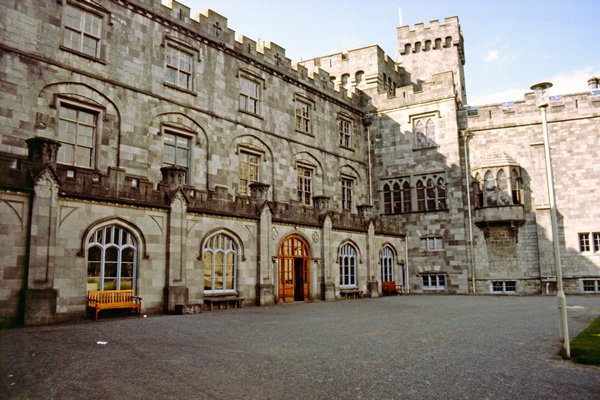
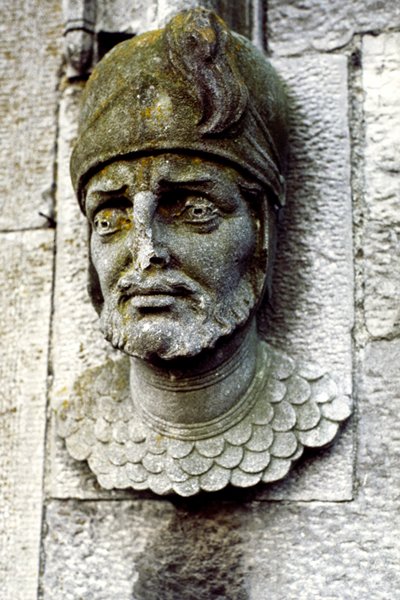
volgende: terug naar Londen